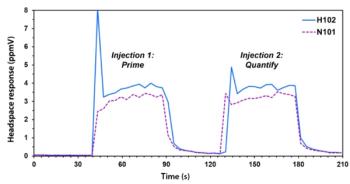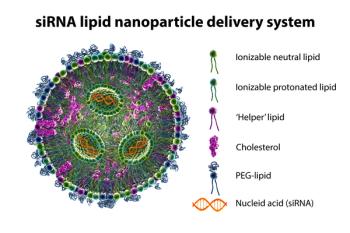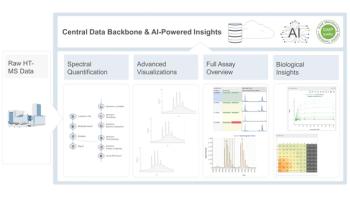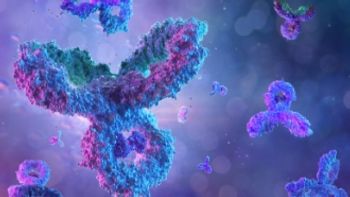Key Points
- Cattle fever is a tick-borne parasitic disease can result in significant morbidity and mortality in cattle. While tightly regulated, current detection approaches can be lacking in sensitivity and specificity.
- Liquid chromatography–tandem mass spectrometry (LC–MS/MS) has not been used to detect and quantify diflubenzuron (DFB) in biological matrices.
- The researchers created a sensitive method for detecting and quantifying DFB in toxicology specimens.
- The developed DFB extraction method was deemed simple, sensitive, and cost-effective.
Researchers from the University of Texas at San Antonio and the United States Department of Agriculture (USDA) tested liquid chromatography–tandem mass spectrometry (LC–MS/MS)’s ability for analyzing diflubenzuron in whole blood samples. Their findings were published in the Journal of Chromatography B (1).
In the United States, the cattle industry contributes approximately $165 billion in value to the domestic economy, including over 2.1 million jobs and $92 billion in employment income. Part of this industry involves preventing exposure to diseases, such as cattle fever. Known historically as red fever and scientifically as bovine babesiosis, this tick-borne parasitic disease can result in significant morbidity and mortality in cattle (2). Symptoms include fever, lethargy, jaundice, weight loss, and anemia, with pathologies including water blood and hemoglobin in urine. The Cattle Fever Tick Eradication Program (CFTEP) was formed in 1906 to eliminate the disease and its vectors from the U.S., and while it was eliminated from the U.S. in the 1940s, CFT continues to cross the U.S. border on stray livestock and wildlife.
There are various means of controlling cattle fever ticks (CFTs), such as using acaricides (pesticides used to kill mites and ticks) (3). Liquid scintillation spectrometers and high-performance liquid chromatography-ultraviolet–visible (HPLC-UV–Vis) instrumentation have been used in the past to detect the benzoylphenyl urea (BPU) compound diflubenzuron (DFB) in various matrices, though these techniques lack the sensitivity and specificity of other techniques. Notably, liquid chromatography–tandem mass spectrometry (LC–MS/MS) has not been used to detect and quantify DFB in biological matrices to monitor absorption, distribution, and elimination in bovine dosing or tick control efficacy studies.
In this study, the scientists developed and validated a sensitive (<1 ppb) LC–MS/MS method for DFB quantification in toxicology specimens. Parallel dosing studies, utilizing oral administration of DFB, were conducted in cattle and white-tailed deer (WTD). In fit-for-purpose testing, the method displayed accuracies within ±9 % of quality control (QC) targets, and coefficient of variation percentages (%CV) of 14.8% for whole blood, 9.0% for plasma, and 8.7% for serum.
According to the scientists, this is the first method to employ carbon-13labeled DFB (13C6) as an internal standard for measuring DFB in blood matrices from bovine dosing studies. The developed DFB extraction method was deemed simple, sensitive, and cost-effective. Signal-to-noise ratios were greater than 80:1 at 1 ng/mL, with the methods proving capable of detecting even lower amounts of DFB. In fit-for-purpose testing, the DFB method reported here was accurate and precise. Implementing carbon-13 labeled DFB as an internal standard introduced various benefits, including response variation normalization due to extraction and ionization efficiency differences between samples and correction for any matrix effects. Further, it served as an internal confirmation of injection on samples with negative results.
Concentrations in blood matrices are critical to understanding the pharmacokinetic and pharmacodynamic parameters of a drug used in dosing studies. LC–MS/MS analysis enables the sensitivity and specificity needed to determine these parameters among dose and activity relationships across different toxicology specimens. Analytical results are also useful in studying bioavailability of the drug and determining efficacious doses. With this method’s development, researchers can now directly study DFB and evaluate the bioavailability and efficacy of similar BPUs in different investigations.
References
(1) Jellick, G.; Lohmeyer, K.; Bach, S. Development of an Analytical Method for the Analysis of Diflubenzuron in Whole Blood, Plasma, and Serum Using Liquid Chromatography Tandem Mass Spectrometry. J. Chromatogr. B 2025, 1256, 124506. DOI: 10.1016/j.jchromb.2025.124506
(2) Bovine Babesiosis. Center for Food Security & Public Health 2018. https://www.cfsph.iastate.edu/Factsheets/pdfs/bovine_babesiosis.pdf (accessed 2025-5-28)
(3) Acaricide. ScienceDirect 2018. https://www.sciencedirect.com/topics/agricultural-and-biological-sciences/acaricide (accessed 2025-5-28)






